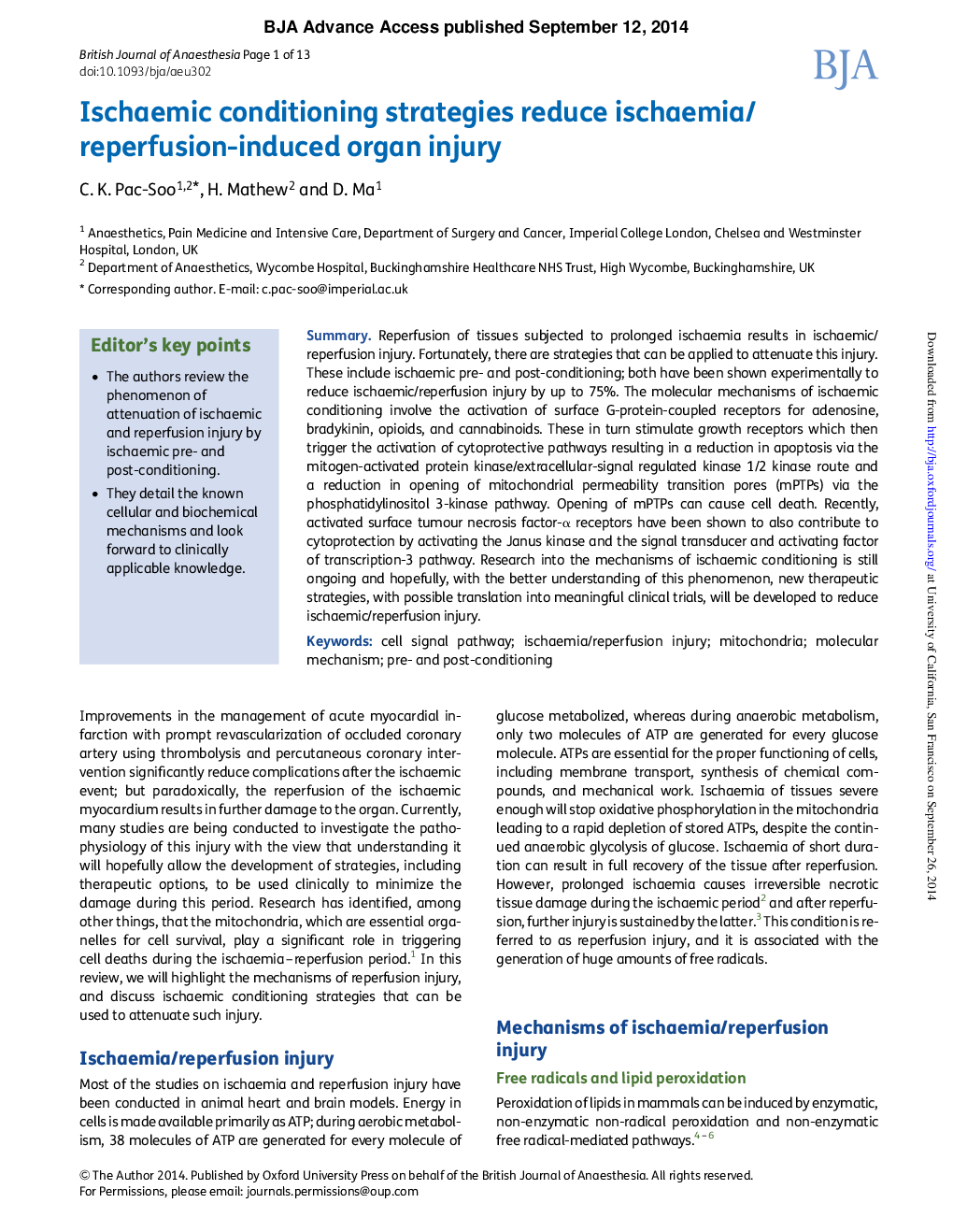| Article ID | Journal | Published Year | Pages | File Type |
|---|---|---|---|---|
| 8932146 | British Journal of Anaesthesia | 2015 | 13 Pages |
Abstract
Reperfusion of tissues subjected to prolonged ischaemia results in ischaemic/reperfusion injury. Fortunately, there are strategies that can be applied to attenuate this injury. These include ischaemic pre- and post-conditioning; both have been shown experimentally to reduce ischaemic/reperfusion injury by up to 75%. The molecular mechanisms of ischaemic conditioning involve the activation of surface G-protein-coupled receptors for adenosine, bradykinin, opioids, and cannabinoids. These in turn stimulate growth receptors which then trigger the activation of cytoprotective pathways resulting in a reduction in apoptosis via the mitogen-activated protein kinase/extracellular-signal regulated kinase 1/2 kinase route and a reduction in opening of mitochondrial permeability transition pores (mPTPs) via the phosphatidylinositol 3-kinase pathway. Opening of mPTPs can cause cell death. Recently, activated surface tumour necrosis factor-α receptors have been shown to also contribute to cytoprotection by activating the Janus kinase and the signal transducer and activating factor of transcription-3 pathway. Research into the mechanisms of ischaemic conditioning is still ongoing and hopefully, with the better understanding of this phenomenon, new therapeutic strategies, with possible translation into meaningful clinical trials, will be developed to reduce ischaemic/reperfusion injury.
Related Topics
Health Sciences
Medicine and Dentistry
Anesthesiology and Pain Medicine
Authors
C.K. Pac-Soo, H. Mathew, D. Ma,
